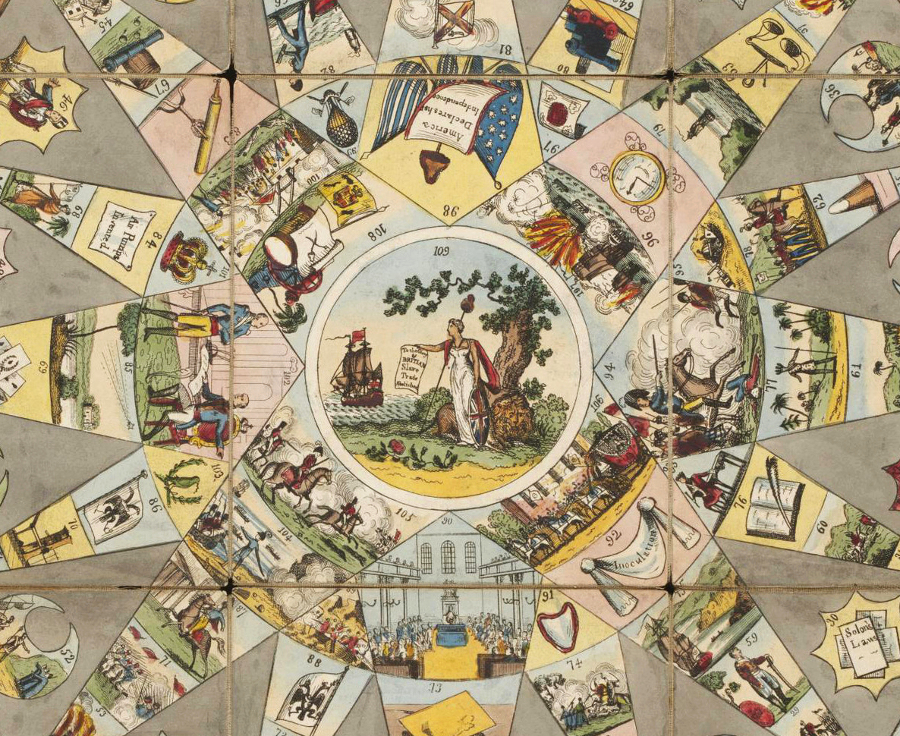
{{ $localize("payment.title") }}
Players moving pieces along a track to be first to reach a goal was the archetypal board game format of the 18th and 19th centuries. Alex Andriesse looks at one popular incarnation in which these pieces progress chronologically through history itself, usually with some not-so-subtle ideological, moral, or national ideal as the object of the game.
T en thousand years ago, in the Neolithic period, before human beings began making pottery, we were playing games on flat stone boards drilled with two or more rows of holes.1 By the Early Dynastic Period in Ancient Egypt, three millennia later, board games were already represented in hieroglyphs. And on the wall of Nefertari’s tomb, built in the twelfth or thirteenth century BCE, someone painted the queen playing Senet, one of three Ancient Egyptian board games whose pieces have come down to us, along with Mehen and Hounds and Jackals.
The ancient Greeks, for their part, had Tabula, an ancestor of backgammon; the Romans added Latrones, an ancestor of chess. All across the ancient Near East, people played the Game of Twenty Squares, while in ancient China they played Liubo and in ancient India Moksha Patam, which was rechristened Snakes and Ladders when colonials imported it to Britain in the Victorian era. Wherever there has been civilization, strange to say, there have been games played on boards.









/cdn.vox-cdn.com/uploads/chorus_asset/file/25417952/transformers_megatron.jpg)




